Last year, Jessica Johnston was working as an editor for Arts & Culture for National Post. Since then, she quit her job, founded her own printing company (Papergirl Press), and launched The Pushpin, an online shop that links art-lovers with gorgeous giclée prints by renowned editorial illustrators and comic artists.
We caught up with her this week.
SDTC: Can you walk us through a typical day in your life?
JJ: I work from home, and I rotate from sitting at my “official” desk, to the kitchen island, to the dining room, which I have fully taken over with my printing gear — it is stacked with packing cardboard, a giant printer and banks of flat file drawers. It no longer works very well for hosting dinners!
I depend on the app Things to keep track of what needs to be done, and each morning I review my to-do lists and focus on the most urgent areas, whether it’s website work, recruiting artists, or test printing new images for the store. I’m usually at one of my desks by 9am, and I work until 6pm or 7pm, with a break time in the day to go for a walk so I don’t go crazy. Meanwhile, I’m still printing and delivering custom orders for Papergirl Press customers.
Now that the site has launched, my days will become more predictable. I’ll wake up, see what new orders have come in, print them and create packing labels. I’ll check the social media, send out a tweet or two, and post to Instagram. I’ve never been much of a social media person, but I’m getting into it with this project. Once a week, I’ll drive around and collect signatures from artists and mail out the goods.
That’s the nitty-gritty, get things done side. Woven in there is always the strategic business side — addressing the ongoing challenge of how to get your product in front of the faces of those who might like it.
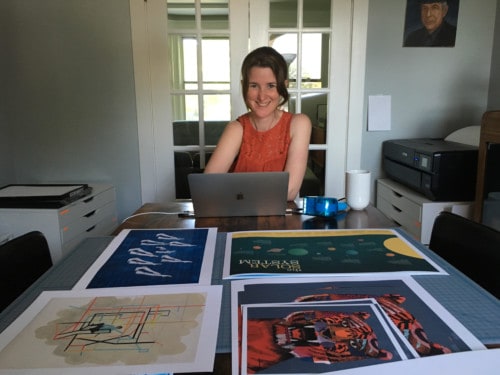
Jessica Johnston
What is the most satisfying aspect of running your own printing company?
I love having a job that’s a mix of big-picture strategic thinking, and small-scale getting things done. The higher-level business questions satisfy the need to solve problems and work through challenges, while the actual printing and shipping is deeply satisfying in a concrete, tangible way. You needed to do it, then you did and it’s done. It’s uncomplicated. Also, the end result is gorgeous prints, and the novelty of that never wears off.
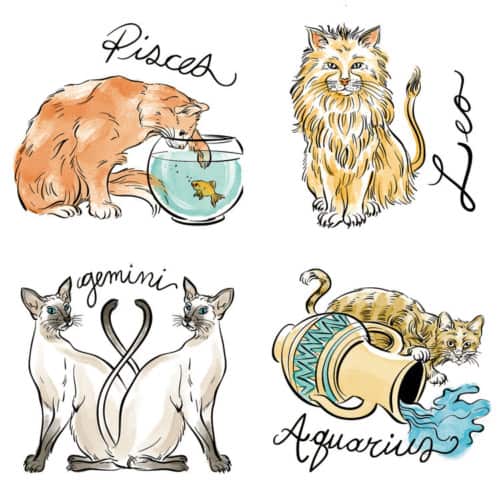
Zodiac Cats – Chloe Cushman
What was the biggest challenge you overcame in getting Papergirl Press off the ground?
It’s funny, Papergirl Press evolved pretty organically. It’s not something I set out to start, at least not at first. I quit my job last year, with the intention of freelancing, and I started doing a bunch of different projects. One of these was a little online shop for my comic-artist husband. I started creating prints of his work, and it turned out I really loved doing this.
I thought about how to expand — I talked to artist friends, and found a real interest in the idea of making high-quality, print-on-demand work available, with me handling the logistics. Right from the beginning, there was momentum behind the idea. The challenges were in the mundane things related to working from home, like not giving into the temptation for midday naps.
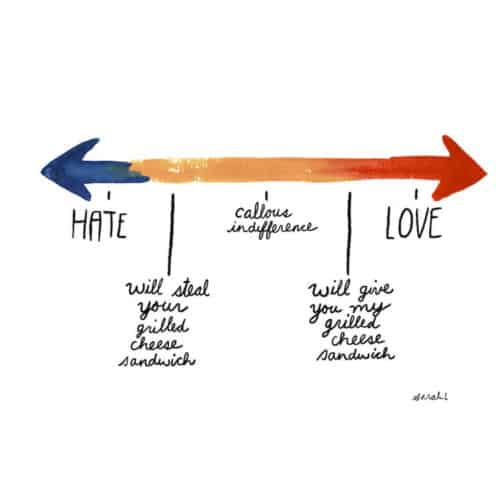
Grilled Cheese – Sarah Lazarovic
How was the transition from office life to working from home?
I love working from home. I wasn’t sure that I would. I worried about being lonely or struggling with motivation, but it’s worked out better than I expected. The one thing I miss is having co-workers. There’s something wonderful in the basic act of being able to get up, walk over to someone’s desk and talk through a question you’re dealing with, have a laugh, and walk back to your desk, confident in your next steps. Sometimes I try to bounce ideas around with the cat, but it’s not the same.
On the pro side, the lack of commute is a big one — I’ve traded forty minutes on TTC each way for one minute on the stairs. The days feel so much longer! Paying for dental I love less, and it is nerve-wracking to not have a consistent paycheque, especially when starting out. But the freedom and flexibility have improved my quality of life, 100%.
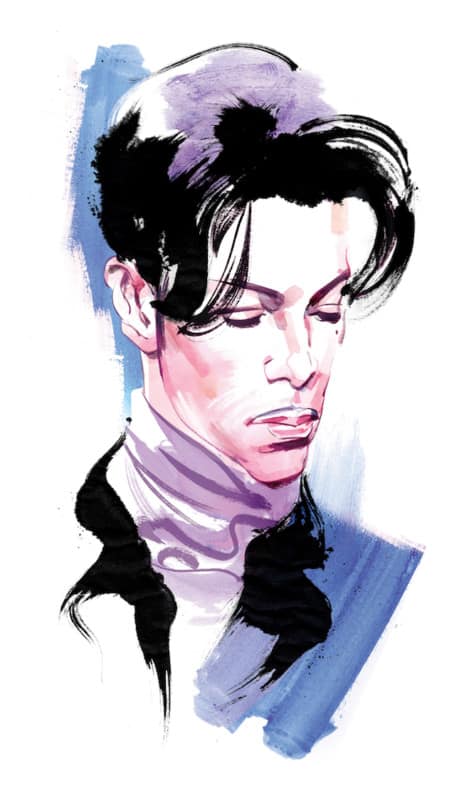
Prince – Kagan McLeod
How do you go about selecting your artists?
Aesthetically, I am attracted to artists who’s work is beautiful, with a playful sensibility. There’s a real sense of fun that runs through the work on The Pushpin. The site is home to comic artists and editorial illustrators, and I love having the two side-by-side. There’s a lot of overlap there, and both still tend to be under-appreciated as art.
Many of the artists on the comic side are high-profile people, like Jeff Lemire, Chip Zdarsky and Kate Beaton. Others are more under-the-radar illustrators, like Chloe Cushman, Julia Breckenreid, and Christian Northeast — who all do incredible work — and I hope there is cross-pollination. You come for a specific artist, but discover others while you’re there. Kate’s not in Toronto, but many of the others are — Michael Cho, Kagan McCleod, Julia Breckenreid, Chloe Cushman and Sarah Lazarovic. I admit proximity played a role in selection. Lucky for me there is so much talent here. First Toronto; tomorrow, the world!
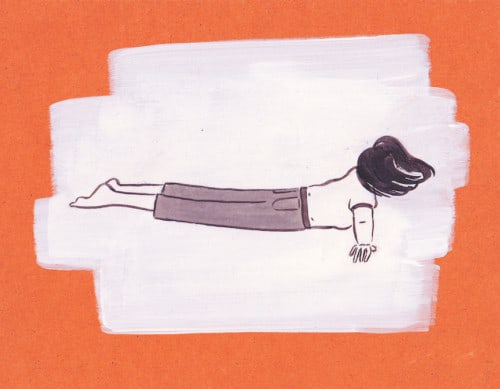
Falling Figure – Dani Crosby
What else should we know about The Pushpin?
It’s great! It has a personality, but there’s enough variety that there will be something there for anyone who is interested in independent arts, even if your tastes don’t run to comic work.
The artists are all wonderful as people, which is important to me, since I’m trying to facilitate a personal connection between artist and audience. You are buying something through a real person (me) that was made by a real person, an artist working as an artist.
I also try to be as responsible as I can in my business choices. The paper, which is luxurious, is made in an environmentally friendly way from cotton retrieved from cottonseed oil production that would otherwise go to waste. I love this. I also use all local suppliers, bank with a credit union, and do my best to stay away from business baddies. I’m creating as many good vibes as I can over here, and everyone’s invited.
Any advice to other women thinking of making a big career change?
Everyone’s paths are so individual, so that’s a tricky one. I had come to a place in my life where I just knew it was time for a big change — it didn’t feel optional. I think when you hit that point where change feels mandatory, it’s important to follow your instinct, and do what you can to make it happen. I do recognize that this is often easier said than done.


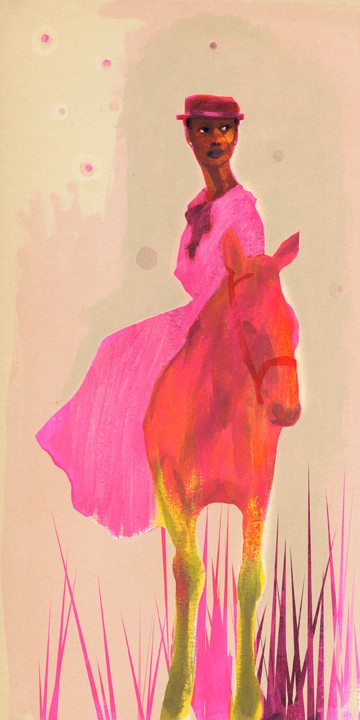

 Follow Us On Instagram
Follow Us On Instagram
